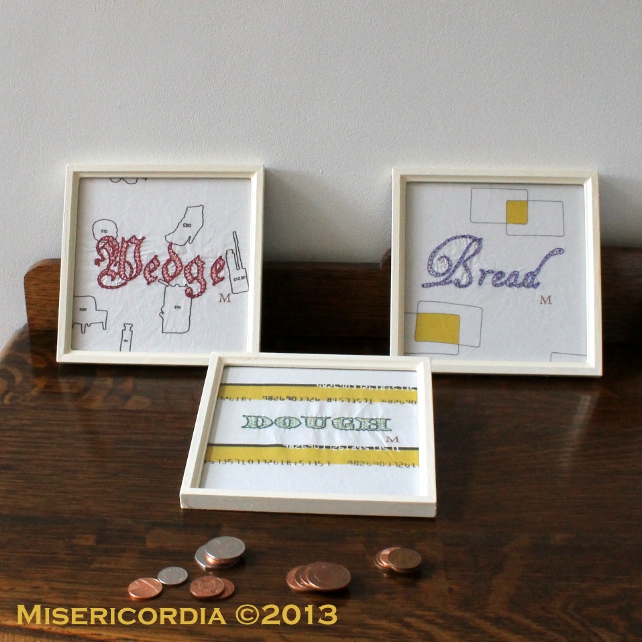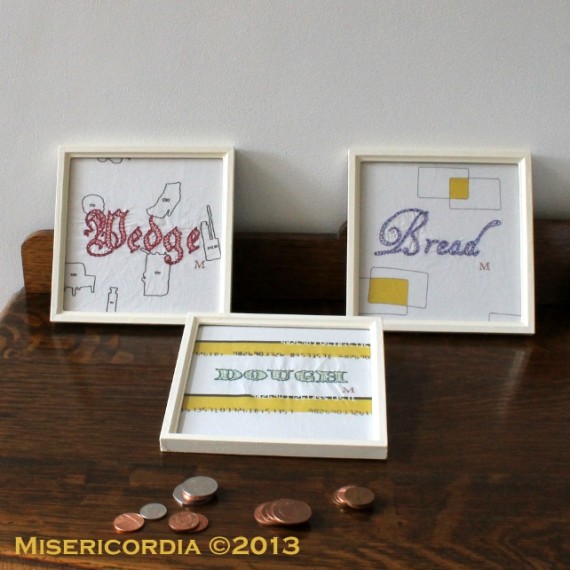I have trouble with large purchases, if you consider large to be above £20.
I can quite happily fritter away £100 in £5 and £10 increments – but to spend it all at once… I usually bottle it and walk away. (That explains the healthy cheese collection in the fridge and the rather woeful state of my wardrobe.)
For instance, I’ve had my eye on a (possibly the only ones manufactured in the world at the moment) pair of 100% cotton, non-stretch, vaguely fashionable jeans which are not made by children.
But they cost more than £20 (as well they should do), so I have patched and mended my one remaining pair of jeans until they are more patch than jean and the patches have holes.
Serendipitously, I read a blog post by John Willshire from smithery.co discussing not only the Hiut jeans I’ve had my eyes on but also the idea of allowing both the producer and consumer to benefit from a more gradual transfer of money and goods.
Sometimes I ponder similar ideas at craft fairs when I’m placed across from stalls selling things that can be impulse purchased. Would browsers who are interested in my work and say ‘I’ll keep you in mind when the baby comes.’ put down a deposit and pay in installments?
Photocraft do something similar for their online photography courses aimed at small businesses and the Arts Council England run Own Art, a scheme to allow people to purchase contemporary art (by living artists) interest-free over 10 months, so it must have some traction.
What do you think? Would you be more likely to commission a piece if you could pay a deposit at a craft fair and follow it up afterwards? What’s your impulse purchase limit?



4 February, 2014 — 11:42 am
I’m the same. I will spend small amounts (usually less than a tenner) without batting an eyelid, but think long and hard about anything more than that (and usually end up filling up my online basket and then abandoning it!).
I’m not sure if I would leave a deposit for a bespoke item at a craft fair: it would depend on the item, and on the seller. Online it’s different because everything is in writing, and if you go through Etsy or another selling platform then there’s a contract in place. Handing over a deposit to someone you don’t know at a fair is very different. I’d be very interested to hear what others have to say about this though!
4 February, 2014 — 12:38 pm
That’s my fear about craft fair deposits too. Perhaps having some kind of contract pack for people to take away would be more reassuring?
4 February, 2014 — 2:18 pm
I have, over the years, used Own Art a lot.
I’ve also, successfully, used it to purchase/commission large, expensive items at Craft Fairs, by approaching the maker direct. Only once has that been turned down.
There has never been a contract written, but we have usually exchanged an email on the spot to confirm arrangements. And, of course, agreed a deposit and payment structure.
A gap in the market definitely exists here – I think that people would probably buy more at craft fairs if they could pay in instalments, and a contract would no doubt facilitate that. I prefer to work on trust – commissioning is about trust anyway.
As for spend limit, I’ve spent over £1,500 in this way for a direct purchase, and commissioned art for over £400 based on previous work. More than that, I’ve gone back. Once a successful relationship has been created, it can get quite addictive 😉
4 February, 2014 — 9:58 pm
That’s really interesting to hear, thanks for sharing your experiences (and I’m dead jealous that you’ve got all that gorgeous art).
I’ve really liked working with people for multiple commissions, it’s nice to get into a groove with what they like and how you interact. I might trial suggesting installments at my next craft fair and see what the response is like. Watch (as they say) this space!